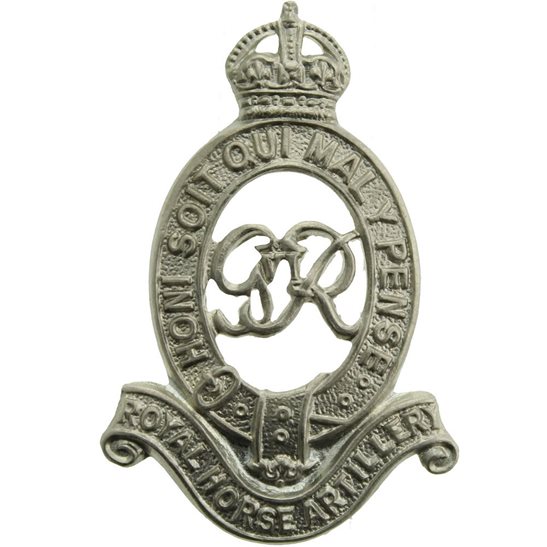Personal Details
Born: 26 August 1896. Baptised on 11 October 1896
Family: Fifth of eight children born to Joseph and Hannah. John married Margaret Faulkner in 1938 at Crewe, Cheshire and together had a daughter, Margaret. Brother to Philip Capper.
Residence: Baptised at Tilstock church. In 1901 the family were living at Tilstock Lane, Tilstock, Whitchurch, Shropshire. By 1911 they had moved to Belton Road, Whitchurch, Shropshire and at the time of enlistment his address was 22 Belton Road. Army documents dating from 1918 list his father’s address as Cliff Bank, Carden, Malpas, Cheshire. In 1939 John and Margaret were living at 9 Wrexham Road, Whitchurch, Shropshire. Twenty-two years later his address was still the same.
Employment: At the time of enlistment he was working as a groom. In 1939 he was employed at the local ironworks as a charge-hand.
Died: Aged 64 and buried in Whitchurch cemetery on 30 March 1961
Military Details
Regiment: Royal Horse Artillery (previously King’s Shropshire Light Infantry)
Rank: Driver
Service Number: 62391 (previously 2863)
Date of Enlistment: 15th Jan 1915 (10th Nov 1914)
Date of Discharge: 14th June 1919 (15th Jan 1915)
Reason for Discharge: Physically unfit for service (Enlistment in regular army)
Other Information: Physically unfit due to severe gunshot wound right leg sustained 11th October 1918.
John was awarded the Campaign Medals (1914/15 Star, British War Medal, and Victory Medal) and the Silver War Badge.

The 1914 Star (also known as 'Pip') was authorised under Special Army Order no. 350 in November 1917 and by an Admiralty Fleet Order in 1918, for award to officers and men of the British and Indian Expeditionary Forces who served in France or Belgium between 5 August and midnight of 22–23 November 1914. The former date is the day after Britain's declaration of war against the Central Powers, and the closing date marks the end of the First Battle of Ypres.
The 1914–15 Star (also known as 'Pip') was instituted in December 1918 and was awarded to officers and men of British and Imperial forces who served against the Central European Powers in any theatre of the Great War between 5 August 1914 and 31 December 1915. The period of eligibility was prior to the introduction of the Military Service Act 1916, which instituted conscription in Britain.
The British War Medal (also known as 'Squeak') was a silver or bronze medal awarded to officers and men of the British and Imperial Forces who either entered a theatre of war or entered service overseas between 5th August 1914 and 11th November 1918 inclusive. This was later extended to services in Russia, Siberia and some other areas in 1919 and 1920. Approximately 6.5 million British War Medals were issued. Approximately 6.4 million of these were the silver versions of this medal. Around 110,000 of a bronze version were issued mainly to Chinese, Maltese and Indian Labour Corps. The front (obv or obverse) of the medal depicts the head of George V. The recipient's service number, rank, name and unit was impressed on the rim.
The Allied Victory Medal (also known as 'Wilfred') was issued by each of the allies. It was decided that each of the allies should each issue their own bronze victory medal with a similar design, similar equivalent wording and identical ribbon. The British medal was designed by W. McMillan. The front depicts a winged classical figure representing victory. Approximately 5.7 million victory medals were issued. Interestingly, eligibility for this medal was more restrictive and not everyone who received the British War Medal ('Squeak') also received the Victory Medal ('Wilfred'). However, in general, all recipients of 'Wilfred' also received 'Squeak' and all recipients of The 1914 Star or The 1914/1915 Star (also known as 'Pip') also received both 'Squeak' and 'Wilfred'. The recipient's service number, rank, name and unit was impressed on the rim.

The Silver War Badge was issued in the United Kingdom and the British Empire to service personnel who had been honourably discharged due to wounds or sickness from military service in World War I. The badge, sometimes known as the "Discharge Badge", the "Wound Badge" or "Services Rendered Badge", was first issued in September 1916, along with an official certificate of entitlement.

